Research Equipment Sharing Center of Physical Methods for Studying Substances and Materials
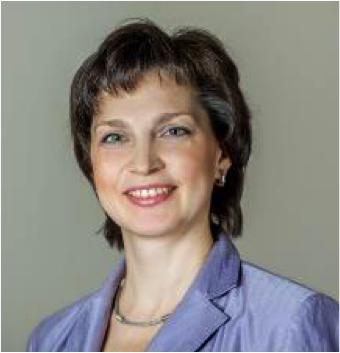
Vasilisa B. Baranovskaya
Head of Center for Collective Use, Dr. of Sciences (Chemistry)
The Research Equipment Sharing Center of Physical Methods for Studying Substances and Materials at IGIC RAS was established in 2000. The Research Equipment Center is a member of the Association of Analytical Centers of Russia “Analytics”.
The activities of the Center are focused on analytical and diagnostic studies of the wide range of substances and materials in the interests of the institute’s departments and external users with the purpose of implementing fundamental and applied work.
V.B. Baranovskaya is the national representative of Russia in the European Society for Metrology in Analytical Chemistry Eurachem; Vice President of the Association of Analytical Centers of Russia “Analytics”; Member of the Scientific Council for Analytical Chemistry of the Russian Academy of Sciences―Scientific Secretary of the Commissions for Optical Spectral Analysis, Metrology of Chemical Analysis, Terminology, Member of the Commission for International Relations; Member of the Scientific Council on Chemistry of High-Purity Substances of the Russian Academy of Sciences.
- Provision and support of IGIC RAS staff, scientific teams of other organizations, and other concerned users with state-of-the-art research methods and equipment. The Research Equipment Sharing Center is a distributed research center whose equipment is located in the laboratories of the Institute to promote the shared use of IGIS RAS facilities.
- Development, combination, and metrological support of analytical chemistry methods of rare, precious metals, high-purity substances, and materials based on them. The staff of the Research Equipment Sharing Center supervised by Head Researcher, Dr. of Sciences (Chemistry) V.A. Ketsko conduct scientific research into creating materials and film structures for spintronics, magnonics, and magnetoplasmonics devices.
- List of works and services provided:
- registration and analysis of the IR spectra of substances and materials by attenuated total internal reflection, diffuse reflection, and transmission methods.
- luminescent analysis of substances and materials.
- quantitative elemental analysis of substances for the content of carbon, hydrogen, nitrogen, and sulfur.
- measurement of the heat capacity of materials in a wide temperature range.
- measurement of thermal characteristics of solid and powder inorganic substances and materials by DSC.
- recording and analysis of one- and two-dimensional high resolution NMR spectra of liquid samples.
- registration of electron paramagnetic resonance spectra in liquid and solid samples.
- single crystal X-ray diffraction analysis.
- determination of molecular and crystalline structures of inorganic, organic, and organometallic compounds.
- study of low temperature phase transitions.
- detailed analysis of crystalline packings using data from crystallographic databases.
- qualitative and quantitative analysis of crystalline phases.
- crystallite size determination.
- measurement of temperature and field dependences of magnetization, static and dynamic magnetic susceptibility, heat capacity of transport properties.
- study of the surface microstructure and bulk materials, including nano- and biomaterials (with an increase of up to ×900 000)
- local elemental analysis of samples.
- sample preparation for transmission electron microscopy.
A complex of atomic-spectral methods and methods for sample preparation, separation, and concentration harmonized with final determination methods for high-purity materials and reusable raw materials containing noble metals were developed.
Scientific basis of the metrological support of the methods studied were created.
Together with Scientific-Practical Materials Research Centre, National Academy of Sciences of Belarus, the scientific basis for the synthesis of ferrite films on semiconductor substrates of microelectronic quality were developed.
Homogeneous oxide semiconductor materials of the composition Mg(Fe0.8Ga0.2)2О4 with a magnetic temperature of 180°C were synthesized both in the ceramic state and on Si and GaN substrates.
- Valery A. Ketsko Head Researcher, Dr. of Sciences (Chemistry)
- Maria A. Kop’eva Senior Researcher, Ph.D. (Chemistry)
- Maria N. Smirnova Researcher, Ph.D. (Chemistry)
- Ksenia V. Petrova Senior Researcher, Ph.D. (Engineering)
- Inga A. Zhidkova Researcher
- T. Yu. Alekseeva, Yu. A. Karpov, O. A. Dal’nova, V. V. Es’kina, V. B. Baranovskaya, L. D. Gorbatova. Current state and problems of analytical control of spent automobile catalysts (Review) // Inorganic materials. 2018. V. 54(14). p. 1421–1429.
- O. A. Dal’nova, G. I. Bebeshko, V. V. Es’kina, V. B. Baranovskaya, Yu. A. Karpov. Contemporary methods of detecting heavy metals in waste waters (Review) // Inorganic materials. 2018. V. 54(14). p. 1397–1406.
- O.N. Kondrat’eva, A.V. Tyurin, G.E. Nikiforova, A.V. Khoroshilov, M.N. Smirnova, V.A. Ketsko, K.S. Gavrichev. Thermodynamic functions of magnesium gallate MgGa2O4 in the temperature range 0–1200 K // Thermochimica Acta. 2016. V. 641. p. 49-54.
- A. Stognij, L. Lutsev, N. Novitskii, A. Bespalov, O. Golikova, V. Ketsko, R. Gieniusz, A. Maziewski. Synthesis, magnetic properties and spin-wave propagation in thin Y3Fe5O12 films sputtered on GaN-based substrates // Journal of Physics D: Applied Physics. 2015. V. 48. 485002.
- M.N. Smirnova, A.A. Geras’kin, G.E. Nikiforova, M.A. Kop’eva, E.N. Beresnev, O.N. Kondrat’eva, V.A. Ketsko. Features of Mg(Fe0.8Ga0.2)2O4 synthesis by glycine–nitrate method // Russian Journal of Inorganic Chemistry. 2015. V. 60(8). p. 930–933.
- RF patent No. 2572499. Optically transparent heterostructure / A.V. Bespalov, A.I. Stognij, N.N. Novitsky, O.L. Golikova, V.A. Ermakov, V.A. Ketsko. Registration date: 10.12.2015.
- A.V. Trukhanov, A.I. Stognij, S.V. Trukhanov, A.A. Geraskin, V.A. Ketsko. Crystal structure and magnetic properties of nanosized Mg(Fe0.8Ga0.2)2O4–δ films on Si substrates // Crystallography Reports. 2013. V. 58(3). p. 498–504.
- A. Ketsko – Prize of the Russian Academy of Sciences and the National Academy of Sciences of Belarus in technical sciences for outstanding results obtained in the course of joint research on the series of works “Materials and film heterostructures for spintronics and magnonics devices” (2015)
Grants of the Russian Science Foundation
- 17-73-10409. Materials and heterostructures for magnetoelectronics (2017–2019)
Grants of the Russian Foundation for Basic Research
- 17-03-01014. Development of general principles for analysis of samples of complex composition by electrothermal atomic absorption spectrometry with a continuous radiation source (2017–2019)
- 16-29-05204. Self-organizing ferrite films for spintronics, magnonics, and magnetoplasmonics (2016–2018)
- 16-08-00933. Development of materials and film heterostructures for magnetoelectronic devices with minimum voltage at the interface (2015–2018)
- 13-08-12402. Development of fundamental foundations and creation of the technology to produce ferromagnet/lead zirconate-titanate/ferromagnet film heterostructures with thermostable magnetoelectric properties during lateral multiplication as a part of microsensors (2013–2015)
- 13-08-00466. Development of film materials and nanoheterostructures with thermostable interphase boundaries for spintronic devices (2013–2015)
- 12-08-90046/12. Synthesis and properties of nanoscale films of composition Mg(Fe8Ga0.2)2O4 on silicon and gallium nitride substrates (2012–2014)
Programs of the Foundation for Assistance to Small Innovative Enterprises in Science and Technology
8555GU/2015. Development of Mg(Fe0.8Ga0.2)2O4/Si film materials for spintronics devices (2015–2017)
Projects in basic research programs of the Presidium of the Russian Academy of Sciences
- Scientific basis for creation of Mg(Fe8Ga0.2)2О4–δ/GaN film heterostructures for spintronics devices (2015–2017)
- Vernadsky Institute of Geochemistry and Analytical Chemistry RAS (Moscow)
- Baykov Institute of Metallurgy and Materials RAS (Moscow)
- Devyatykh Institute of Chemistry of High-Purity Substances RAS (Nizhny Novgorod)
- Institute of Spectroscopy RAS (Troitsk)
- Moscow State University (Moscow)
- Moscow Technological University MIREA (Moscow)
- Mendeleev University of Chemical Technology of Russia (Moscow)
- National University of Science and Technology MISIS (Moscow)
- Saint Petersburg State University (St. Petersburg)
- National Research Tomsk State University (Tomsk)
- Scientific-Practical Materials Research Centre, National Academy of Sciences of Belarus (Republic of Belarus)
- Research Center Geesthacht (Germany)
- Faculty of Chemistry, Brock University (Canada)
- European Society for Metrology in Analytical Chemistry “Eurachem”
- Cooperation on International Traceability in Analytical Chemistry CITAC
- International Laboratory Accreditation Cooperation ILAC
- Industry institutes
Shared Research Center Equipment
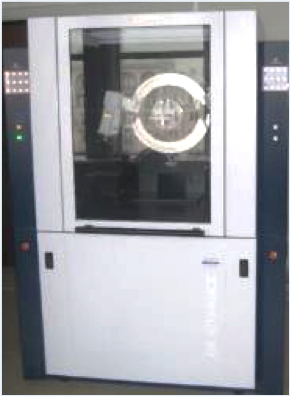
D8 Advance X-ray diffractometer
A modern laboratory diffractometer enables scientists to solve almost the whole range of problems in the field of powder X-ray diffraction:
- qualitative and quantitative analysis of crystalline phases
- structural analysis.
- determination of crystallite sizes.
- analysis of structural changes in crystalline phases on temperature, humidity, and pressure change by means of appropriate chambers.
- quick analysis using a position-sensitive detector.
- automatic data collection mode and further processing of the results with the DIFFRACplus software package.
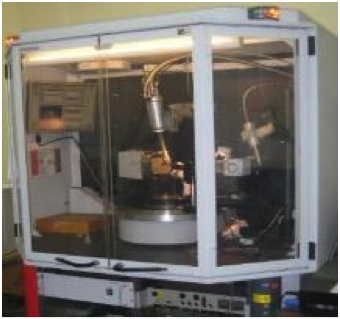
SMART APEX II X-ray single crystal diffractometer
Designed to determine the crystalline and molecular structures of inorganic, organic, and organometallic compounds at various temperatures followed by the construction of a detailed distribution of electron density:
- MoKα
- two-coordinate detector.
- 01º resolution.
- quantum gain: 170 electrons per photon.
equipped with a low-temperature attachment; operating temperature ranges from 90 to 290
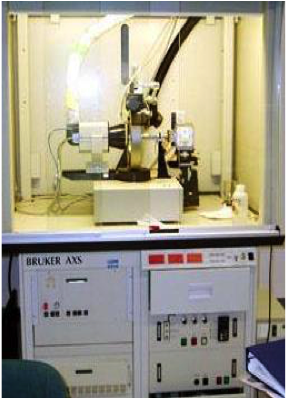
Bruker P-4 X-ray diffractometer
Designed to conduct single crystal X-ray diffraction experiments.
The diffractometer has Eulerian geometry. A 2000 W Mo X-ray ceramic tube is used as a radiation source; a graphite monochromator is used to monochromatize X-ray radiation. Reflected radiation is registered by a standard scintillation point detector. The device is equipped with standard software that helps determine and refine the unit cell parameters, symmetry, conduct experiments on a set of X-ray reflection arrays with subsequent processing. The experimental data obtained are used to determine and refine crystal structures. The device is equipped with a low-temperature nitrogen attachment operating in the temperature range from –30 to –173°C.
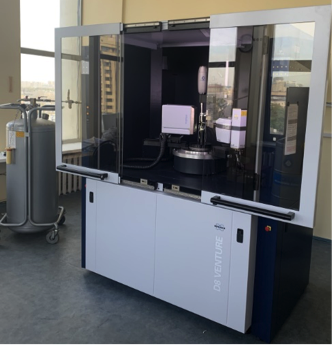
Bruker D8 Venture diffractometer
This machine is designed for X-ray diffraction studies of single crystals aimed to determination of crystal and molecular structures of various compounds in the wide temperature range (90 – 500 K). It is equipped with modern and very fast Photon II detector and two intense IμS X-ray sources (Mo and Cu) providing the possibility to explore extremely small and weak diffracting samples.
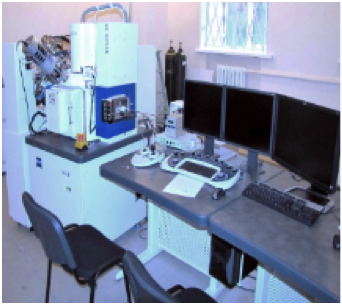
Carl Zeiss NVision 40 Scanning electron microscope
Equipped with an Oxford Instruments X-MAX microprobe analyzer and focused ion beam. This is a high-resolution universal field-emission scanning electron microscope using a third-generation GEMINI electron-optical column.
The broad analytical capabilities of the microscope allow for research in such areas as the study and development of new materials, their analysis and diagnosis.
The device enables to carry out:
- analysis of the microstructure of powder and bulk materials, including nano- and biomaterials (multiplication up to ×900 000);
- determination of the chemical composition of inorganic materials;
- sample preparation for transmission electron microscopy.

Quantum Design PPMS-9 Automated complex
Designed to measure the physical properties of materials in the range of magnetic fields up to ± 9 T and temperatures 1.9–400 K.
The device enables to conduct:
- studies of the magnetic properties of materials (magnetic susceptibility, magnetization).
- measurement of specific heat.
- studies into heat-conducting properties.
studies into the conductive properties of materials (resistivity, Hall effect, critical current).
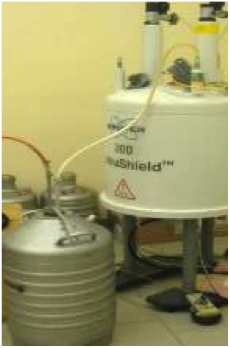
Bruker AVANCE-300 High Resolution NMR Radio Spectrometer
Designed to record one-and two-dimensional 1H, 13C, 19F, 31P, 11B, 27Al, 195Pt, 7Li NMR spectra of dissolved complexes in the temperature range from –120 up to +160°C.
The device enables:
- to determine the structure and dynamic transformations of the studied complex compounds in solutions from NMR spectra.
- to obtain NMR spectra in the solid phase, from which the energy characteristics of phase transitions can be determined.

Bruker ELEXSYS E680Х EPR spectrometer
Designed to record the spectra of electronic transitions in substances and materials in the solid and liquid phase, raw materials and chemical products, pharmaceuticals, products of metallurgy and semiconductor industry, etc.
It is characterized by high sensitivity, the ability to operate in stationary and pulsed modes in two frequency ranges, and equipped to work in a wide temperature range (4–300 K).
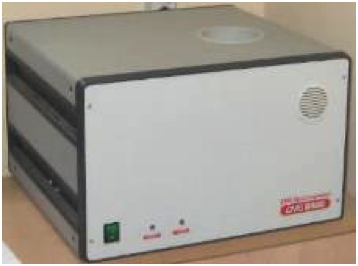
CMS-8400 EPR spectrometer
Designed to record the spectra of electron paramagnetic resonance in liquid and solid samples to detect paramagnetic substances and detect free radicals.
The device provides high sensitivity and resolution, has a built-in frequency meter as well as magnetic field and temperature sensors.

PerkinElmer LS 55 Luminescent spectrometer
An extremely flexible device that can operate in four modes including fluorescence, phosphorescence, chemiluminescence, and bioluminescence. The luminescence intensity, excitation wavelengths, and emission can be recorded in real-time mode. Setting the wave program enables to store up to 15 pairs of excitation and emission wavelengths and measure the attenuation of phosphorescence and polarization of the spectrum.
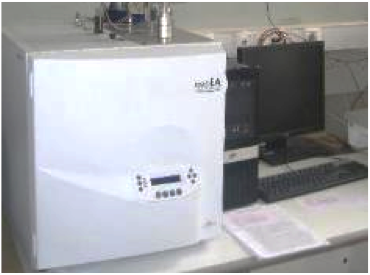
EuroVector CHNS Elemental Analyzer
Designed to conduct quantitative analysis of substances for the content of carbon, hydrogen, nitrogen, and sulfur.
By quantitative high-temperature decomposition, solids/liquids are converted into a mixture of simple gases. The gas mixture is purified, its components are separated and detected using high sensitivity detectors with an accuracy of 0.1%. Detection range of elements is from <0.01 up to 100%.
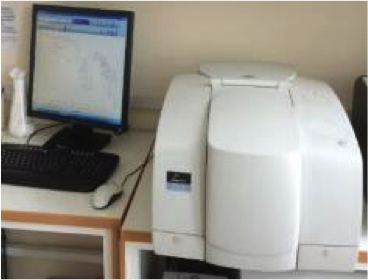
Perkin Elmer Spectrum 65 IR Fourier spectrometer equipped with a single-reflection ATR attachment
This device has built-in validation, verification, and testing capabilities to ensure complete assurance in the analysis results.
It contains all the functions required for recording, processing, and analyzing spectra.
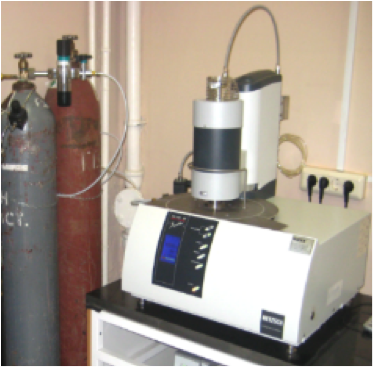
STA 449 F1 Jupiter Device for synchronous thermal analysis
Designed to conduct TG-DSC analysis of samples in the range of 30–1500°C.
- high versatility in use results from using various sensors, a wide sed of crucibles, and a wide range for thermogravimetric measurements, making the system applicable for the analysis of all types of materials;
- easily interchangeable sample holders help optimally adapt the system to various areas of measurement tasks;
the vacuum tight design of the device help perform measurements in various atmospheres.
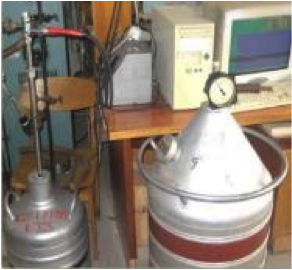
BKT-3 Automatic Low-Temperature Calorimeter equipped with an attachment for measuring thermal conductivity
The unit is designed to measure the heat capacity of solid and liquid substances.